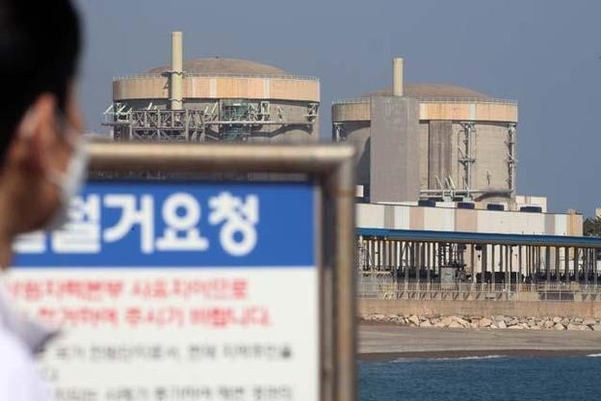Input 2021.01.18 14:06 | Revision 2021.01.18 14:14
“Detection of 18 times the standard value of tritium? Actually, the standard value is 0.03%”
“The level of exposure to 6 liters of milk and 6 more bananas in one year”
“The Democratic Party misunderstood and criticized radiation dose measurement standards”

At 11 am on the 18th, Professor Jeong said at a non-face-to-face press conference co-hosted by the Korean Atomic Energy Society and the Korean Society for Radiation Protection under the theme’Is Tritium at Wolseong Nuclear Power Plant Really Dangerous?’ Four nuclear experts, including Professor Jeong, Director of the Radiation Safety and Culture Research Center, Lee Jae-ki, Professor Kim Hee-ryeong, Unist (Ulsan Institute of Science and Technology), and Professor Kang Kun-wook of the Department of Nuclear Medicine, Seoul National University College of Medicine, presented as presenters.
On the 7th, the Democratic Party said, “In April 2019, in the manhole of the Wolseong nuclear power plant, the radiation dose of tritium was detected as much as 713,000 becquerels (Bq) per liter of water, 18 times the standard value. “It is difficult to understand the results of the audit of the auditor who could not be confirmed.” While the Board of Audit and Inspection is auditing the Ministry of Trade, Industry and Energy and Korea Hydro & Nuclear Power over the legitimacy of the Wolseong nuclear power plant’s early closure decision process, such criticisms have led to debates between the political circles as well as the scientific community and environmental groups.
Becquerel is the amount of radiation emitted by a radioactive material. The Nuclear Safety Commission, a regulatory authority in Korea, sets the amount of tritium that can be discharged from nuclear power plants to 40,000 becquerels or less per liter of water. However, 18 times more than this was detected at the Wolseong nuclear power plant.
“The standards are wrong,” the scientists refuted. At the nuclear power plant, there is a storage tank that stores spent nuclear fuel such as tritium, and there is a’collecting well’ that stores water under it. Radioactive material from the reservoir can be mixed with the water in the catchment well. When discharged to the outside, this water is diluted again to lower the tritium concentration. The standard for human health hazards is to measure the amount of tritium in the water discharged, and is independent of the amount of tritium in the water collection well.

Regarding the harmfulness of ’13 becquerels per 1 liter’, Lee Jae-ki, director of the Radiation Safety and Culture Research Institute, explained, “It is 3 to 13 times more than natural water (1 to 4 becquerels) and 6 times more than milk (2.1 becquerels).” . This figure is much lower than the standards of not only Korea, but also the US nuclear regulatory authority (40,000 becquerels), the World Health Organization (WHO, 10,000 becquerels), the Canadian nuclear regulatory authority (7,000 becquerels), and the US Ministry of Environment (740 becquerels).
Professor Jeong also mentioned how much the human body is actually exposed to the radiation emitted by tritium in water. The amount of human exposure is measured in a unit called’sievert (Sv)’. If you eat one banana, you are exposed to 0.1 microsieverts (μSv·1 millionth of Sv). Professor Jeong said, “As a result of investigating the exposure of 495 and 931 people around Wolseong to tritium two times from 2014 to last year, it was found that they were exposed to a maximum of 0.6 μSv per year. It is about eating 6 bananas in one year.
Professor Kang Kun-wook of the Department of Nuclear Medicine at Seoul National University College of Medicine also said, “If the annual exposure exceeds 100 millisieverts (mSv, 1 in 1000 Sv), the cancer incidence rate will exceed 0.5%, which is dangerous, but less than 1 mSv is relatively safe.” “It doesn’t make sense to discuss it in the μSv unit, which is a fraction of the level.” Professor Kang added, “The fear of radiation killed Korea’s nuclear power, and the failure to exit the fossil fuel system led to fine dust and climate change.”

Professor Kang explained, “Because tritium moves freely like water when it enters the human body, it does not accumulate in specific organs, and its half-life is as short as 10 days.” Half-life is the time it takes for the amount of radioactive material to be halved, meaning that the shorter it is, the faster it disappears.
In response to the ruling party’s attack that “tritium is a dangerous substance that does not exist in nature,” scientists briefly refuted that “it exists in nature.”
As the controversy continued despite the explanation of KHNP and the academic community, the Wonan Committee announced on the previous day that “we will investigate as soon as we organize a private expert investigation team.”
